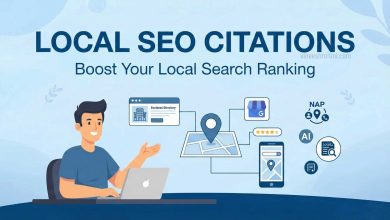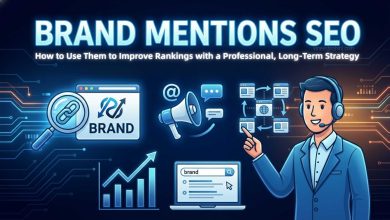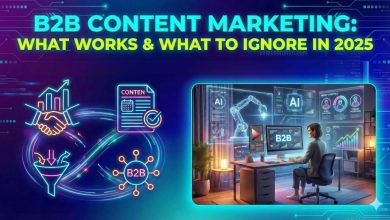SEA (Search Engine Advertising)
Introduction
In the modern digital landscape, Search Engine Advertising (SEA) has emerged as a powerful and indispensable tool for businesses and marketers worldwide. SEA, often referred to as paid search or pay-per-click (PPC) advertising, encompasses a wide array of strategies and techniques used to promote products and services through search engines like Google, Bing, and Yahoo. Over the years, SEA has evolved significantly, transforming the way businesses connect with their target audiences and driving profound changes in the marketing landscape.
This essay aims to provide a comprehensive analysis of SEA, delving into its evolution, key components, strategies, benefits, challenges, and the broader impact it has had on businesses, consumers, and the digital ecosystem as a whole. By examining the past, present, and future of SEA, we gain valuable insights into its significance in the contemporary marketing world.
Section 1: The Evolution of Search Engine Advertising
1.1 Early Beginnings
The roots of SEA can be traced back to the late 1990s when search engines first started gaining prominence. Early iterations were rudimentary, with basic text ads displayed alongside search results. One of the pioneers in this field was Goto.com (later Overture), which introduced the concept of bidding for ad placement in search results.
1.2 Google AdWords Revolution
Google AdWords, launched in 2000, marked a watershed moment in the evolution of SEA. It introduced the Pay-Per-Click (PPC) model, allowing advertisers to bid on keywords and pay only when users clicked on their ads. This innovation laid the foundation for the modern SEA ecosystem.
1.3 Expansion of Ad Platforms
In the following years, other search engines like Bing and Yahoo developed their advertising platforms, diversifying the options available to advertisers. This expansion provided greater reach and competition, driving innovation in ad formats and targeting capabilities.
1.4 Rise of Mobile and Voice Search
The proliferation of smartphones and the advent of voice-activated assistants like Siri and Alexa further transformed SEA. Advertisers had to adapt their strategies to target users on mobile devices and optimize for voice search queries.
1.5 Machine Learning and Automation
The integration of machine learning and automation into SEA platforms, particularly Google Ads, has revolutionized ad targeting and optimization. AI-powered algorithms enable advertisers to deliver highly relevant ads to users based on their search behavior, demographics, and preferences.
Section 2: Key Components of Search Engine Advertising
2.1 Keywords and Ad Copy
Keywords form the foundation of SEA. Advertisers conduct keyword research to identify terms and phrases relevant to their products or services. Compelling ad copy that incorporates these keywords is crucial for attracting clicks and conversions.
2.2 Ad Auctions and Bidding
Ad platforms like Google Ads use complex auction systems to determine ad placement. Bidding strategies, such as manual CPC, automated bidding, and enhanced CPC, play a vital role in this process.
2.3 Quality Score and Ad Rank
Quality Score is a critical metric that assesses the relevance and quality of ads, keywords, and landing pages. Ad Rank, which considers Quality Score and bid amount, determines an ad’s position on the search engine results page (SERP).
2.4 Ad Extensions
Ad extensions enhance the visibility and functionality of ads. They include sitelink extensions, callout extensions, and structured snippet extensions, among others, allowing advertisers to provide additional information and options to users.
2.5 Landing Pages
The effectiveness of an SEA campaign isn’t solely dependent on the ad itself. Landing pages, where users are directed after clicking on an ad, must align with the ad’s message and provide a seamless user experience.
Section 3: Strategies and Best Practices
3.1 Keyword Strategy
Crafting a well-researched keyword strategy is fundamental to SEA success. This involves identifying relevant keywords, managing negative keywords, and continually optimizing the keyword list.
3.2 Ad Copy Optimization
Creating compelling ad copy that captures the user’s attention and conveys the value proposition is an ongoing process. A/B testing and ad copy rotation are essential techniques for optimization.
3.3 Budget Allocation
Effectively allocating the advertising budget is crucial. Strategies like geotargeting, dayparting, and ad scheduling help optimize spending for maximum ROI.
3.4 Ad Positioning and Bidding
Advertisers must strike a balance between ad position and cost. Positioning too high may result in high costs, while positioning too low can limit visibility. Bid management tools assist in finding the optimal position.
3.5 Ad Testing and Experimentation
Constant testing and experimentation are central to SEA success. Advertisers can experiment with ad formats, targeting options, and bidding strategies to refine their campaigns.
Section 4: Benefits and Advantages of Search Engine Advertising
4.1 Targeted Reach
SEA allows advertisers to precisely target users based on their search queries, demographics, location, and interests. This precision enhances the likelihood of reaching potential customers.
4.2 Cost Control
The PPC model ensures that advertisers only pay when users engage with their ads. Budgets can be adjusted in real-time, offering a high degree of cost control.
4.3 Measurable Results
SEA platforms provide extensive analytics and tracking tools, allowing advertisers to measure the performance of their campaigns with precision. This data-driven approach enables data-based decision-making and optimization.
4.4 Quick Results
Unlike organic search engine optimization (SEO), which takes time to yield results, SEA can generate immediate visibility and traffic for businesses, making it an ideal choice for product launches and time-sensitive promotions.
4.5 Brand Visibility
Even if users don’t click on an ad, the mere presence of a brand in search results can boost brand visibility and credibility.
Section 5: Challenges and Considerations
5.1 Increasing Competition
As more businesses recognize the value of SEA, competition for ad placement has intensified, driving up bidding costs and making it harder for smaller businesses to compete.
5.2 Click Fraud
Click fraud, where competitors or malicious entities repeatedly click on ads to deplete budgets, remains a concern in the SEA landscape.
5.3 Ad Blockers
The rise of ad blockers poses a challenge to SEA by preventing ads from reaching their intended audience.
5.4 Ad Fatigue
Users exposed to the same ads repeatedly may become immune to them, leading to ad fatigue. Advertisers must combat this by creating fresh, engaging content.
5.5 Privacy Concerns
Increasing awareness of data privacy has led to stricter regulations and limitations on tracking and targeting options in SEA.
Section 6: The Broader Impact of SEA
6.1 Economic Impact
SEA has become a significant driver of revenue for search engine companies like Google, contributing to their dominance in the digital advertising market.
6.2 Small Business Growth
While large corporations often dominate traditional advertising, SEA levels the playing field, allowing small businesses to compete effectively and reach a global audience.
6.3 User Experience
Well-targeted and relevant ads enhance the user experience by providing users with valuable information and solutions to their queries.
6.4 Data and Privacy Concerns
The collection of user data for ad targeting has raised concerns about privacy and prompted regulatory actions like GDPR and CCPA.
6.5 Future Trends
The future of SEA is likely to be shaped by emerging technologies like voice search, artificial intelligence, and augmented reality.
Conclusion
In summary, Search Engine Advertising has come a long way since its inception, evolving into a multifaceted marketing tool with significant benefits and challenges. Its ability to deliver targeted reach, measurable results, and quick returns has made it indispensable for businesses in the digital age. However, as the digital landscape continues to evolve, SEA must adapt to changing technologies, user behaviors, and regulatory environments.
As businesses navigate the complex world of SEA, they must strike a balance between harnessing its advantages and addressing its challenges. Moreover, the ethical and privacy considerations surrounding data usage in SEA will require ongoing attention and compliance with evolving regulations. Ultimately, the impact of SEA extends beyond marketing; it influences the way we search, discover, and interact with information on the internet, shaping the digital ecosystem we navigate every day.



